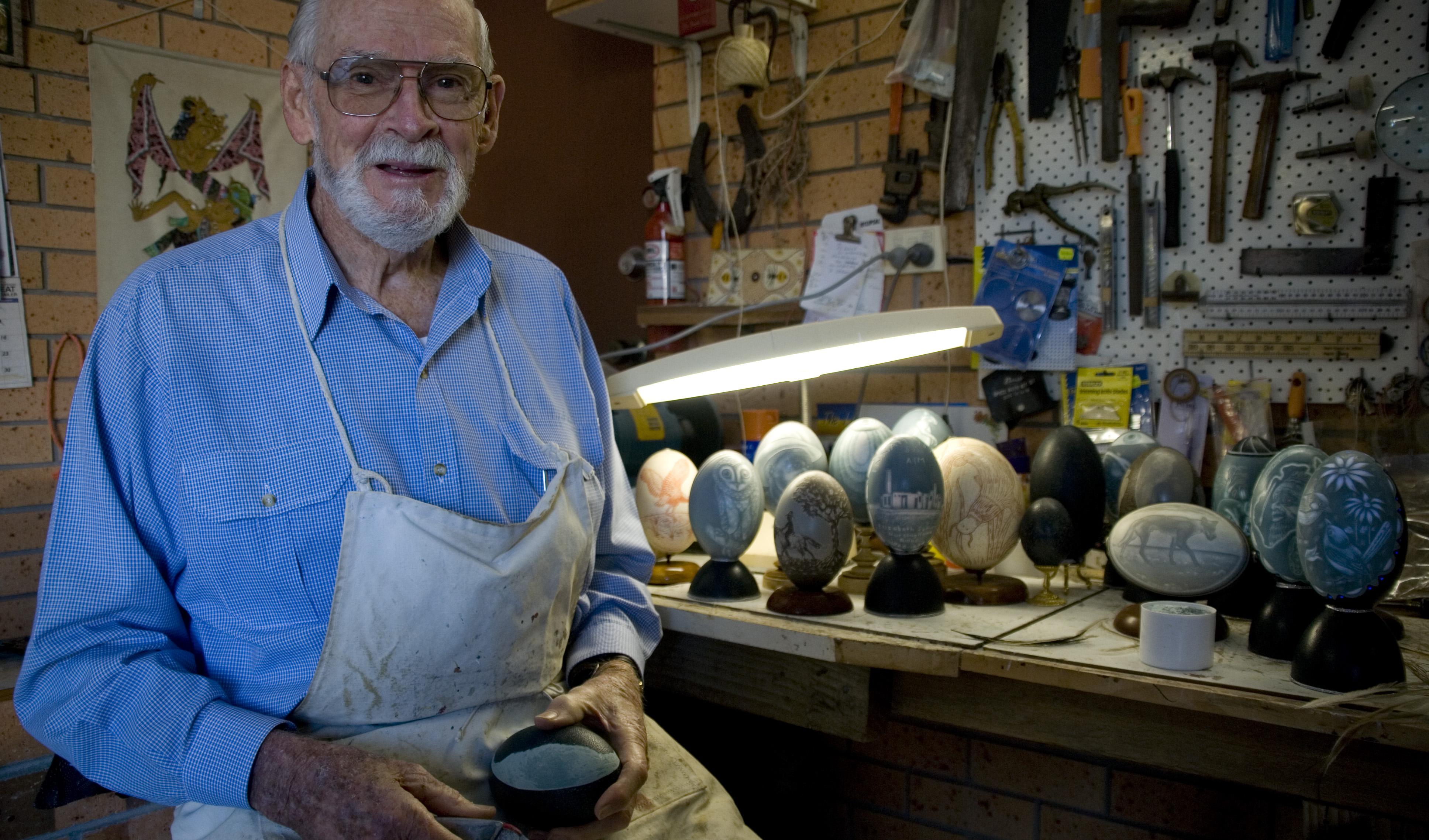The craftsman behind the best emu eggshell art

EMU EGGSHELLS have as many as 10 distinct coloured layers, says Frank Slip, from Old Bar in northern NSW. These range from green-black to teal and pure white. The 85 year old artist would know- he’s carved 956 emu eggs.
Frank took up the craft in 1945 while he was a relief railway porter in Coonamble, about 420 km north-west of Sydney, where emu eggs were often on the boarding-house menu. “We had them any way that you use chook eggs,” he recalls. “Scrambled, as omelettes, in pudding, cakes and lemon butter…we never had them boiled because it takes about 45 minutes.” And although Frank smothered them in tomato sauce, he reckons they tasted like hen eggs.
Emu-egg carving was a popular pastime on stations and in Aboriginal communities from the mid-1800s to early 1900s; fine examples from the latter period now reside in many museums. Frank, however, taught himself the art, and in the 64 years since he scratched his first egg he has refined his style.
“When I started out I used a razor blade,” he says. “I tried electrical devices, but a stanley knife gives me the most control.” As he talks, he scrapes away the outer layer of a 14 cm long egg that he holds steady against his apron-protected stomach. It’s the first step of a three-day project.

Frank carving emu eggs.
Frank sourced most of his eggs from station hands in western NSW until 1983, when a NSW National Parks and Wildlife Service licence stipulated that they mist come from farmed emus.
A foundation Australian Geographic subscriber, Frank has also given almost half a dozen of his eggs to AG; the first to founder Dick Smith in 1985. His personal collection of about 100 includes several he painted with Indigenous motifs inspired by friend Geoffrey Bardon, the school teacher who in the ’70s helped establish the Western Deserts Papunya Tula art movement. However, his specialty is carving pictures of native animals and plants.
In the ’70s and ’80s, Frank’s eggs sold for $300 each. These days he carves for pleasure, not profit, and hopes his hands will hold steady until he finishes his 1000th egg. “They’re creations, not stamps, and each one brings me the satisfaction of doing something really right,” he says.
This article was originally published Issue 96 of Australian Geographic, 2009. Since this time Frank has passed away.
READ MORE:




